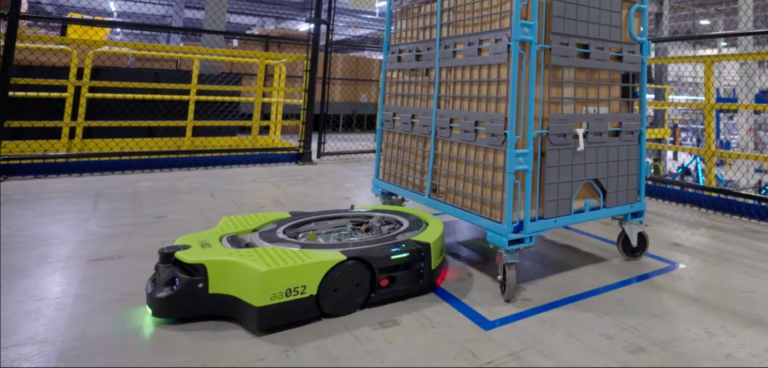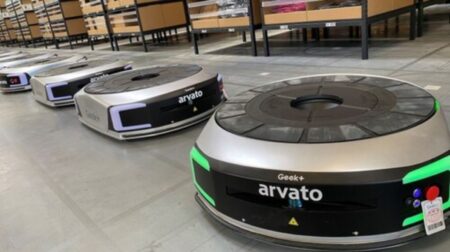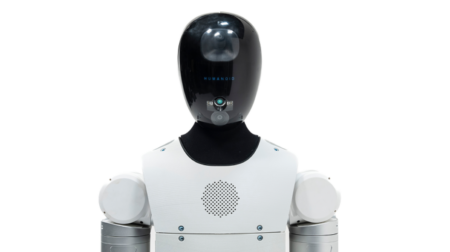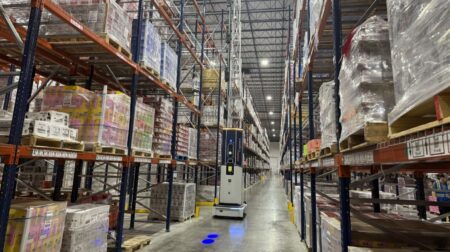Amazon has revealed its first fully autonomous mobile robot (AMR), designed to move large carts throughout its warehouses, among a slew of other robotic innovations.
The robot, called Proteus, features advanced safety, perception, and navigation technology and has been built to be automatically directed to perform its work and move around employees, meaning it does not need to be confined to restricted areas – as per previous Amazon robots, which were kept separated in caged areas.
According to Amazon, it can operate in a manner that augments “simple, safe interaction between technology and people” such as the lifting and movement of GoCarts, the non-automated, wheeled transports used to move packages through Amazon facilities.
Proteus will initially be deployed in the outbound GoCart handling areas in Amazon fulfilment centres and sort centres. Amazon said it aims to automate GoCart handling throughout the network to help reduce the need for people to manually move heavy objects through its facilities.
The company also announced several other robotic systems. One, called Cardinal, is a robotic arm that can lift and move packages weighing up to 50 lb (22.6kg), which Amazon hopes to deploy in warehouses next year. According to Amazon, its AI-powered computer-vision systems enable the robotic workcell to pick out and lift individual packages, even if they’re in a pile.
Amazon also revealed a solution that could relieve employees of the hand scanners they currently use to log barcodes. Instead, the Amazon Robotics Identification (AR ID) system, which uses a combination of AI, computer vision and machine learning technology, sees workers stand in front of a camera system that runs at 120 frames per second and recognises the packages without pausing to scan the label.
Finally, to reduce the need for employees to reach up, bend down, or climb ladders when retrieving items, Amazon has developed a robotic system designed to deliver products to workers in a more ergonomically friendly manner.
Through a highly choreographed dance of robotics and software, Amazon’s new containerised storage system helps determine which pod has the container with the needed product, where that container is located in the pod, how to grab and pull the container to the employee, and how to pick it up once the worker has retrieved the product.
Amazon first entered the mobile robot space in 2012, when it acquired Kiva Systems for US$775m (£653m). Kiva offered automated guided vehicles that could navigate a warehouse using a series of computerised barcode stickers on the floor.









